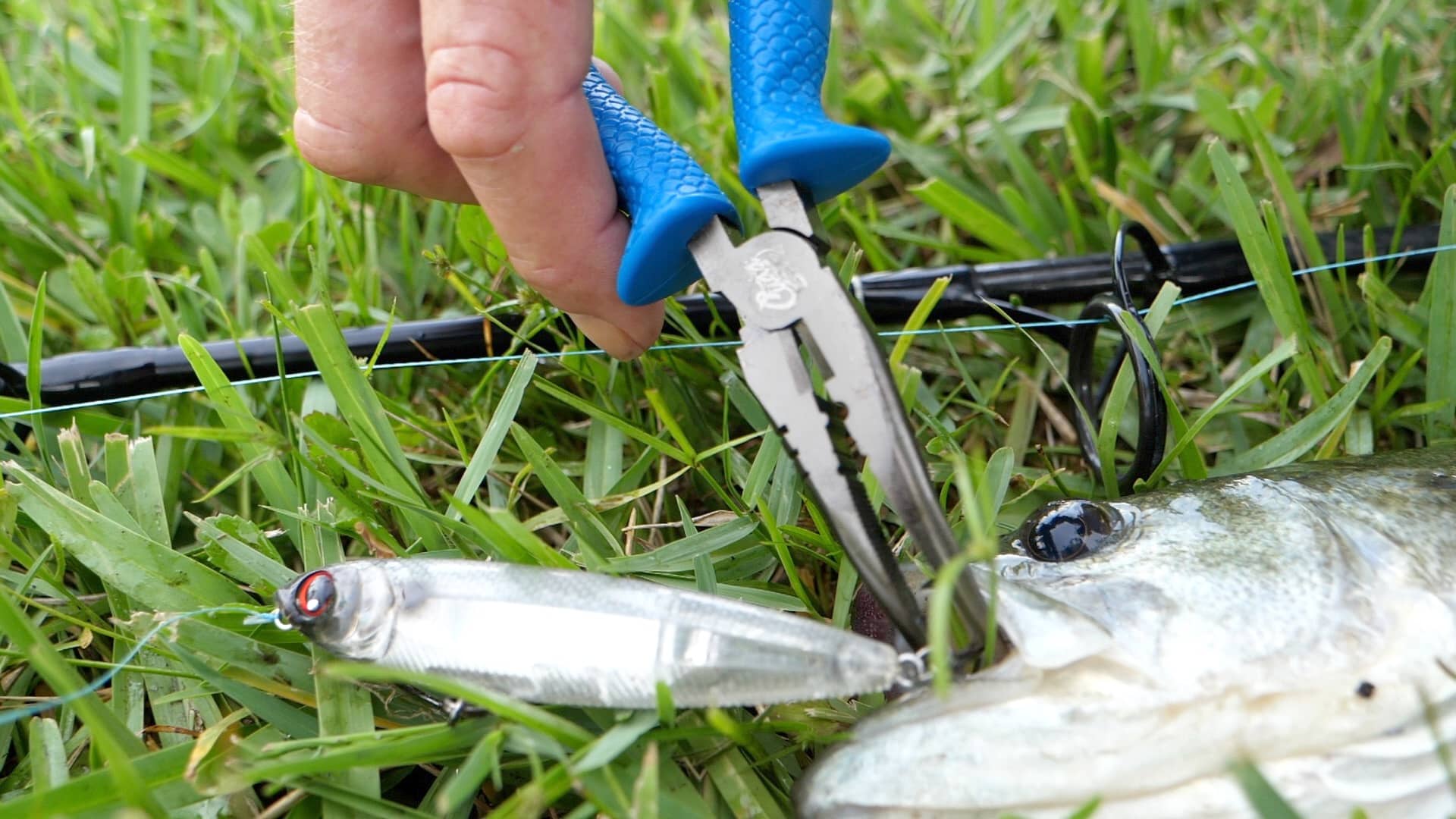Fishing pliers are a specialized tool used in fishing to help anglers handle and manipulate fishing lines, hooks, and lures. They are typically made of durable materials such as stainless steel and are designed to be rust-resistant, which is important given the exposure to water.
Fishing pliers typically have a long, narrow nose that can be used to grip hooks and lures, as well as cutters to help anglers snip fishing line. Some fishing pliers also have additional features, such as crimpers for attaching leaders and split ring tools for attaching hooks to lures.
Fishing pliers can be particularly useful when dealing with fish that have sharp teeth or spines, as they allow anglers to handle the fish without risking injury. They can also be helpful when dealing with particularly stubborn hooks or knots.
Overall, fishing pliers are an essential tool for any angler and are available in a variety of shapes and sizes to suit different fishing styles and preferences.

KastKing Fishing Pliers, Fish Lip Gripper Saltwater Resistant Fishing Tools.
Corrosion resistant 420 Stainless Steel fishing pliers and fish lip gripper – Durable corrosion resistant coating – Tungsten carbide line cutters slice through mono, fluorocarbon and braided fishing line with ease

Black Anchor Aluminum Fishing Pliers 6.7″ Saltwater Resistant Anodization
The aircraft-grade anodized aluminum delivers excellent corrosion resistance, great for long term use without any signs of oxidation and rust

Multi-purpose Fishing Pliers
he lengthened head of fishing Pliers can go deep into the fish mouth, making it easy to take and change hooks.
Material and size in Fishing Pliers?
Fishing pliers are typically made of durable materials that can withstand exposure to water and salt, such as stainless steel, aluminum, or titanium. Stainless steel is the most commonly used material because it is strong, rust-resistant, and relatively lightweight. Aluminum and titanium are also popular materials for fishing pliers because they are lightweight and corrosion-resistant.
The size of fishing pliers can vary widely depending on the type of fishing they are intended for and the preferences of the angler. Some pliers are designed to be compact and portable, while others are larger and more heavy-duty. Small fishing pliers may have a length of around 6-7 inches, while larger pliers may be closer to 8-10 inches in length.
It’s important to choose a fishing plier size that is appropriate for the type of fishing you plan to do. For example, if you’re targeting larger fish that require heavy-duty gear, you may want to opt for a larger, heavier fishing plier that can handle the job. Conversely, if you’re fishing in tight spaces or need to be mobile, a smaller, more compact plier may be a better choice.
How to choose a Fishing Pliers?
When choosing fishing pliers, there are several factors to consider to ensure that you select a pair that will meet your needs and preferences. Here are some important factors to consider:
Material
Choose fishing pliers made of a durable, corrosion-resistant material such as stainless steel, aluminum, or titanium. Stainless steel is the most popular choice due to its strength, rust-resistance, and affordability.
Size
Consider the size of the fishing pliers. Choose a size that fits comfortably in your hand and is appropriate for the type of fishing you plan to do. Smaller pliers are more portable, while larger pliers are heavier and more heavy-duty.
Jaw Design
The jaw design is an important factor to consider when selecting fishing pliers. Some pliers have a straight jaw, while others have a curved or angled jaw. Curved jaws are often better for removing hooks, while straight jaws are better for cutting and crimping.
Cutting Ability
Make sure the fishing pliers have a sharp cutter that can cut through fishing line cleanly and easily. Look for pliers that have replaceable cutters or blades.
Grip
Choose fishing pliers with a comfortable grip that will allow you to maintain a firm grip, even in wet or slippery conditions. Rubber or textured grips can help prevent the pliers from slipping out of your hand.
Additional Features
Consider any additional features that may be important to you, such as split ring tools, crimpers, or line clippers. These features can add versatility to your fishing pliers and make them more useful in a variety of fishing situations.
Overall, choosing the right fishing pliers can make your fishing experience more enjoyable and productive. By considering the factors above, you can find a pair of pliers that will meet your needs and preferences.
Uses of Fishing Pliers?
Fishing pliers are a versatile tool that can be used for a variety of tasks related to fishing. Here are some common uses of fishing pliers:
- Removing Hooks: Fishing pliers can be used to remove hooks from the mouth of a fish. The long, narrow nose of the pliers can grip the hook securely, allowing you to remove it without injuring the fish or yourself.
- Cutting Line: Fishing pliers typically have a built-in cutter that can be used to cut fishing line cleanly and easily. This is particularly useful when you need to change your lure or leader quickly.
- Crimping: Some fishing pliers have a built-in crimper that can be used to crimp sleeves or split shots onto your fishing line. This can be useful when you need to adjust the weight or presentation of your bait or lure.
- Split Ring Tool: Fishing pliers with a split ring tool can be used to attach hooks or lures to split rings. This can be particularly useful when changing out hooks or lures frequently
- Cutting Hooks: Fishing pliers can be used to cut hooks, particularly when they are bent or damaged and cannot be removed safely.
Overall, fishing pliers are a versatile tool that can be used for a variety of tasks when fishing. By having a pair of fishing pliers on hand, you can make your fishing experience more efficient and enjoyable.




